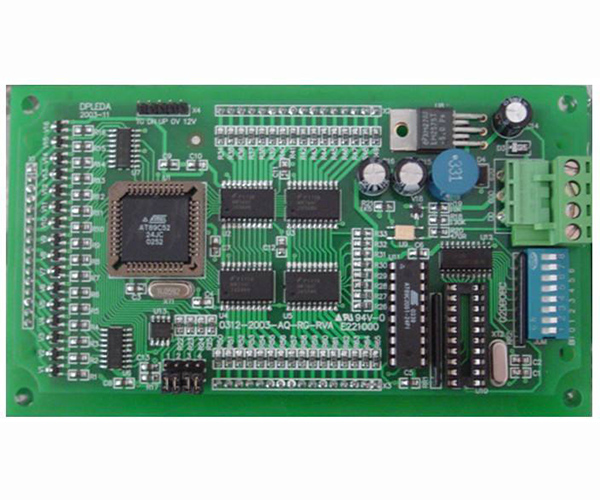PCBA contaminants refer to any surface deposits, impurities, slag inclusions and adsorbed substances that reduce the chemical, physical or electrical properties of PCBA to unqualified levels.
Ionic or non-ionic pollution generated in PCBA processing, when exposed to humid environment or electric field conditions, will cause chemical corrosion or electrochemical corrosion, resulting in leakage current or ion migration, which will affect the performance and life of the product.
According to related statistics, nearly 50% of the failures of PCBA finished products are caused by the environment, and nearly 60% of the failures occur in the warehouse. Although the three-proof coating process can play a certain barrier and protection against environmental impacts, if the pollutants are not cleaned, the coating may lose its protective significance. What are the common pollutants that have important hazards to PCBA quality?
PCBA pollutant category

PCBA pollutants include various surface residues, pollutants, and substances adsorbed or absorbed by the surface that can degrade product performance.
Various pollutants can be divided into two series: inorganic and organic according to their composition.
Inorganic contaminants will reduce insulation resistance, increase leakage current, and corrode metal surfaces in a humid environment.
Inorganic pollutants are generally polar pollutants, also called ionic pollutants, mainly from PCB (such as etching, electroplating, electroless plating and solder mask processes), component packaging materials, flux, equipment oil, personnel fingerprints and Environmental dust, etc., manifested in various inorganic acids, inorganic salts and organic acids, etc., which need to be removed by polar solvents (such as water or alcohols). Ionic pollutant molecules have an eccentric electronic distribution, which is easy to absorb moisture. Under the action of carbon dioxide in the air, positive and negative ions are generated, which causes corrosion of the product and a decrease in surface insulation resistance. Electromigration will occur under the presence of an electric field, resulting in branching. Like crystals, leading to leakage and short circuit. The low surface energy of polar contaminants can also make it penetrate the solder mask and grow dendrites under the surface of the board. Of course, polar pollutants can also be non-ionic. When bias voltage, high temperature or other stresses exist, various negatively charged molecules will line up to form an electric current by themselves.
Organic pollutants will form an insulating film, affect electrical contact, and even cause open circuit failure.
Organic pollutants are generally non-polar or weakly polar, mostly non-ionic pollution, and need to be removed by non-polar solvents or composite solvents. Non-polar types mainly include rosin, artificial resin, flux thinner, solder mask leveling agent, cleaning agent (such as alcohol), anti-oxidation oil, skin oil, glue and grease, etc., which are represented by long-chain hydrocarbons Or carbon atoms are composed of fatty acids; weakly polar types mainly include organic acids and bases in flux. Non-ionic pollutant molecules have no eccentric electronic distribution, cannot be separated into ions, and do not cause chemical corrosion and electrical failure, but they will reduce solderability and affect the appearance and detectability of solder joints. It is worth noting that non-polar pollutants can absorb polar pollutants through dust, making them have the characteristics of polar pollutants and causing electrical failures. In addition, such substances have thermal denaturation, which is relatively difficult to clean, and sometimes white pollution occurs after cleaning.
Flux is the main source of contaminants, mainly composed of film-forming agents (rosin and artificial resin), activators, solvents and additives, etc., which produce thermally modified products after welding.
Chloride
Chloride ions mainly come from the hot air leveling process in PCBA processing, flux, sweat stains and tap water for cleaning. Chloride ions and moisture in the air form ionic liquids, causing erosion, leakage, and ionization of metals. The chloride ion content is affected by the PCB substrate because it determines the allowable chloride ion content during the assembly process. Ceramic substrates or metal substrates (such as aluminum, etc.) are more sensitive to the presence of chloride ions than organic substrates (such as glass epoxy cloth); the nickel/gold coating surface is cleaner than the lead/tin coating surface.
Bromide
Bromide ion is mainly added as a flame retardant to solder mask inks, character inks and some fluxes that use bromine as the active material, and the effect is smaller than chlorine. The bromide ion content is related to the porosity of the PCB substrate or the porosity of the solder mask, so the condition of the substrate or solder mask reflects the level of bromide ion content. In addition, the number of times of high-temperature cleaning of the PCB substrate also has an impact on the bromide ion content, especially related to the cleaning of the PCB substrate with hot air leveling flux before assembly.
Sulfate ion
Similar to the effects of chlorine and bromide ions, sulfate comes from the process of PCB substrate processing, including various paper bases, resin materials, acids used for microetching, etc., and tap water for rinsing or cleaning.
Methanesulfonic acid
The corrosive effect is many times that of chlorine, usually from the electroplating process during PCB substrate processing, and sometimes it is also used as an active agent replacement in the HASL flux process.